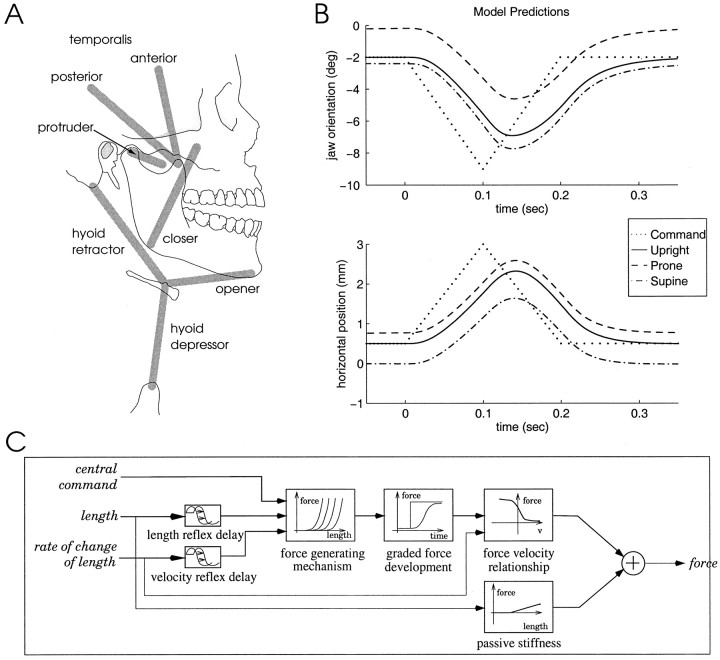Fig. 1.
A, Schematic of the modeled muscle groups and their attachments to the jaw and hyoid bone. B, Predicted jaw orientation and horizontal position for an opening–closing movement. The same constant rate equilibrium shift (dotted line) underlies movements in the three different orientations relative to gravity: upright (solid line), prone (dashed line), and supine (alternating dots anddashes). Compared with the upright orientation, simulated jaw movement in a prone orientation is rotated closer to occlusion and translated in an anterior direction. In contrast, the simulated jaw movement in a supine orientation is rotated away from occlusion and translated in a posterior direction. C, Muscle model.

